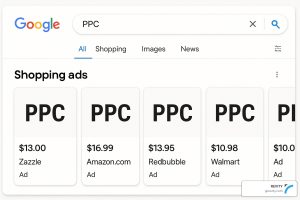Many small and large businesses are utilizing paid social media advertising to connect with their target audience.
All kinds of companies, whether business-to-business, business-to-consumer, service-based, or product-based, leverage paid social media. For many businesses, paid social media represents a significant source of leads and revenue.
Because of social media, it is easier than ever to advertise to any kind of audience, global or local. Before you jump into paid social media advertising, there are some answers to common questions you might benefit from.
Our local expert weighed in on some of the most frequently asked questions about paid social media advertising.
Sang has been managing our paid social media advertising department for a while now. He got his start in social media advertising shortly after college. Upon graduation, he created many businesses to find one that earned a good return. Through all his business ventures, he learned a lot about split testing and utilizing his results.
He found satisfaction and success in gathering information and steadily improving his returns on advertising. He gradually gravitated towards paid social media advertising until it became all he did.
Here at Revity, Sang manages the paid ads of a few dozen separate businesses, helping them gather user information and discover advertisements that resonate with their target audience. His efforts are helping these companies get better ROI for their marketing budgets.
Question: How do you make a good social media ad?
Answer:
Understand Your Audience
Before you make your ad, you need to learn about your prospective customer. You need to know about their life in as much detail as you can manage. Some things that are useful to know are:
- What their problems are.
- Their goals and dreams.
- What kind of product or service they are looking for.
- What daily activities they engage in.
- The kind of content they prefer to consume.
Knowing the answers to these questions can make it easier to understand the kind of messages that will draw their attention.
Understanding an audience and anticipating their needs can help you design a buying process that maximizes the returns you will get with your marketing efforts. The next step is figuring out what your audience needs to know or do for them to do business with you.
Are you looking for them to become more aware of your brand? Or do you want them to buy from you? It may not be right for your business to jump directly into sales, especially if your product is the kind that requires more brand awareness before someone is willing to make a purchase.
It will be helpful to create buyer personas and outline the buyers’ journey in this stage so you can visualize what information needs to be shared, what actions the customer needs to take, and when that needs to happen.
Create a Hook
You can start by creating something that will hook them into your ad.
Your hook should be focused on your audience’s problem and then on the solution to their problem. Address the problem and show that you have a solution. It needs to be short and attention-grabbing. Show your audience that your product or service can help them achieve their goals.
Consider these example hooks:
- How to avoid expensive car repairs.
- 5 things you can do right now to avoid cooking nasty home meals.
- How you can run without knee pain.
- Looking for a meaningful gift?
- Biggest sale for our women’s line of the year!
- Decorate your work desk with these unique items!
Each of these hooks addresses problems: expensive car repairs, horrible home cooking, runner’s knee, etc. They also hint that the audience can solve their problems. What’s next? They are curious and want to hear what you have to say.
If your hook isn’t good, your audience is much less likely to read the rest of your ad.
Provide Value
Create your ad so that you are talking directly to your customer. Don’t just show them an ad; give them a solution to their problem.
This is giving your audience value.
Here is where you present your pitch. Show an ad for your product that helps them make quick work of a difficult task or present a service that helps them avoid problems. Show the benefits someone will get if they purchase your product or service.
Make sure the media you are using, whether that is an image or a video, are good quality and easy to understand. Use clear lettering and direct language.
Call Them To Action
A clear message is essential, but you risk losing your audience without a clear call to action.
Revisit what you learned about your audience and what you want them to do. Create clear invitations to act.
Here are some examples:
- Like, share, or comment on this post.
- Visit our website.
- Sign up for our mailing list.
- Purchase this product.
Social media companies like Meta have clear and concise CTAs built into their platform.
Besides the hook, the call to action is the second most important part of the ad. Without a clear call to action, your ideal customer won’t know how to do business with you. This is a problem, especially if they want to do business with you.
Question: Is it difficult to manage social media ads?
Answer:
The answer to this question depends on what kind of company you have and the products or services you are offering. It can be time-consuming to set up and test an ad campaign, and it takes consistent effort to maintain them once they are working.
To give you an idea of what it’s like running a paid social media campaign, here is what we do when we get a new account here at Revity.
Set Up the Account
Before running ads, you should be active on your social media. This is for two reasons: to gather information and to be active on the platform. We have found that Meta has a “hidden” policy where activity before starting ads positively correlates to a return on advertising later.
For the first few weeks of having a new account for a large business, we are active on social media. We are making and testing posts to see what gets us the best engagement and are taking note of what works.
For smaller accounts, we try to be as active on social media as possible. The first 50 or even 100 posts aren’t going to see much engagement or return. So, for the first hundred or so posts, we just try to push content and gather what information we can from it. Once our posts start gaining traction, we can gather more accurate information.
During this phase, we will be activating and monitoring pixels to ensure they will help us track the performance of our ads once we go live. We’ll also test content through boosted posts to see which content gets the most engagement.
In this phase, we aren’t looking for specific engagement benchmarks; we just want to know what content works best. This period may last two to four weeks and requires us to post on the account daily.
Once we have gathered a few weeks’ worth of user information, we are ready to test ads.
Create and Test Ad Content
Following the ad-making process mentioned earlier in this blog, we can create ads that will respond well to our audience.
Sometimes it helps to create a story out of your product or brand. This may make it easier to connect with your audience emotionally.
Depending on your budget, you should run multiple ads at once to see what messaging and media work best.
Depending on your product and industry, it can take anywhere from two weeks to three months to start seeing big returns on your ad spending. Until you start making a profit on your ads, concentrate on making your ads break even. From there, you can test different ads to see what works best for your audience.
Continue Testing New Content
Even if your ads perform well, you shouldn’t stop testing new variations. Continue to create new ads that do better than the previous version. This is where you will start to see the most significant returns on your ad spending.
Question: What social media platform should I advertise on and why?
Answer:
Facebook and Instagram are the greatest revenue sources in the social media industry. Before Meta changed their privacy policy a couple of years ago, Facebook and Instagram ads would generate up to 80-90% of returns for businesses.
Now, in the aftermath of criticism over their use of user data and disputes with Apple limiting the scope of the data they can collect, Facebook and Instagram don’t perform as well as they did but are still the best social media service to advertise on.
This is primarily due to how the platform tracks, manages, and targets social media users. One thing that makes Meta’s platforms so lucrative is their ability to track data. Using this data, it is easier to optimize your ads for your target audience.
Other social media platforms don’t track and use data as well as Meta’s platform does. In general, it is just easier and more lucrative to use Facebook and Instagram, especially since Meta’s platforms have the most users out of any other social media platform.
Question: Is Social Media Advertising Affordable?
Answer:
In many ways, social media advertising is very affordable. However, getting to the point where your ads consistently give you a high return takes time.
As mentioned before, optimizing a social media campaign to deliver consistent returns can take anywhere from two weeks to three months. Until that point, you will spend a lot of time breaking even or only getting small returns.
This is only for the testing phase. Once you’ve put in the work, collected data, and tested different ads, you should begin to see a pattern of what works and what doesn’t.
When testing a campaign, we’ll start with a daily budget equal to the average order value. As we see more positive results, we’ll start raising the budget. After a while, you’ll begin to see your returns grow.
Once you’ve reached a healthy profit margin, you must adjust the budget to where you are getting the right leads or sales to maintain your company’s growth.
Question: What industries do best on social media?
Answer:
Any kind of business can do well on social media. This is because there are so many different types of people on social media. Social platforms have billions of users, making social media a great place to reach global markets.
Companies that are exclusively online stand the most to gain from social media advertising. eCommerce companies rely on social media and search engines for spreading the word about their products and cannot take advantage of having a good physical location like brick-and-mortar shops can.
That doesn’t mean companies with physical stores or service-oriented can’t get business. In fact, social media can be great for these companies as well.
Many people use search engines and social media to research companies before buying from them. You can use this to your advantage and put advertisements in front of people actively searching for something related to your company on social media.
If you want to try paid social media marketing, there is no harm in doing so. It may work for your company.
Go Social With Revity Marketing Agency
If you’re a business looking to leverage the power of social media advertising to reach new customers and drive growth, Revity Marketing Agency can help.
Our team of experienced paid social media advertising specialists has the knowledge and expertise to develop and execute effective campaigns across a variety of platforms, including Facebook, Instagram, LinkedIn, and more.
With Revity, you can trust that your social media advertising dollars are being well spent. We’ll work with you to understand your business goals, target audience, and budget to create a customized strategy that delivers results.
And with our comprehensive reporting and analysis, you’ll be able to see the impact of your campaigns in real-time and make data-driven decisions to optimize and improve performance.
Don’t let the complexities of paid social media advertising hold your business back. Contact Revity today and start seeing the benefits of social media advertising for yourself.
































